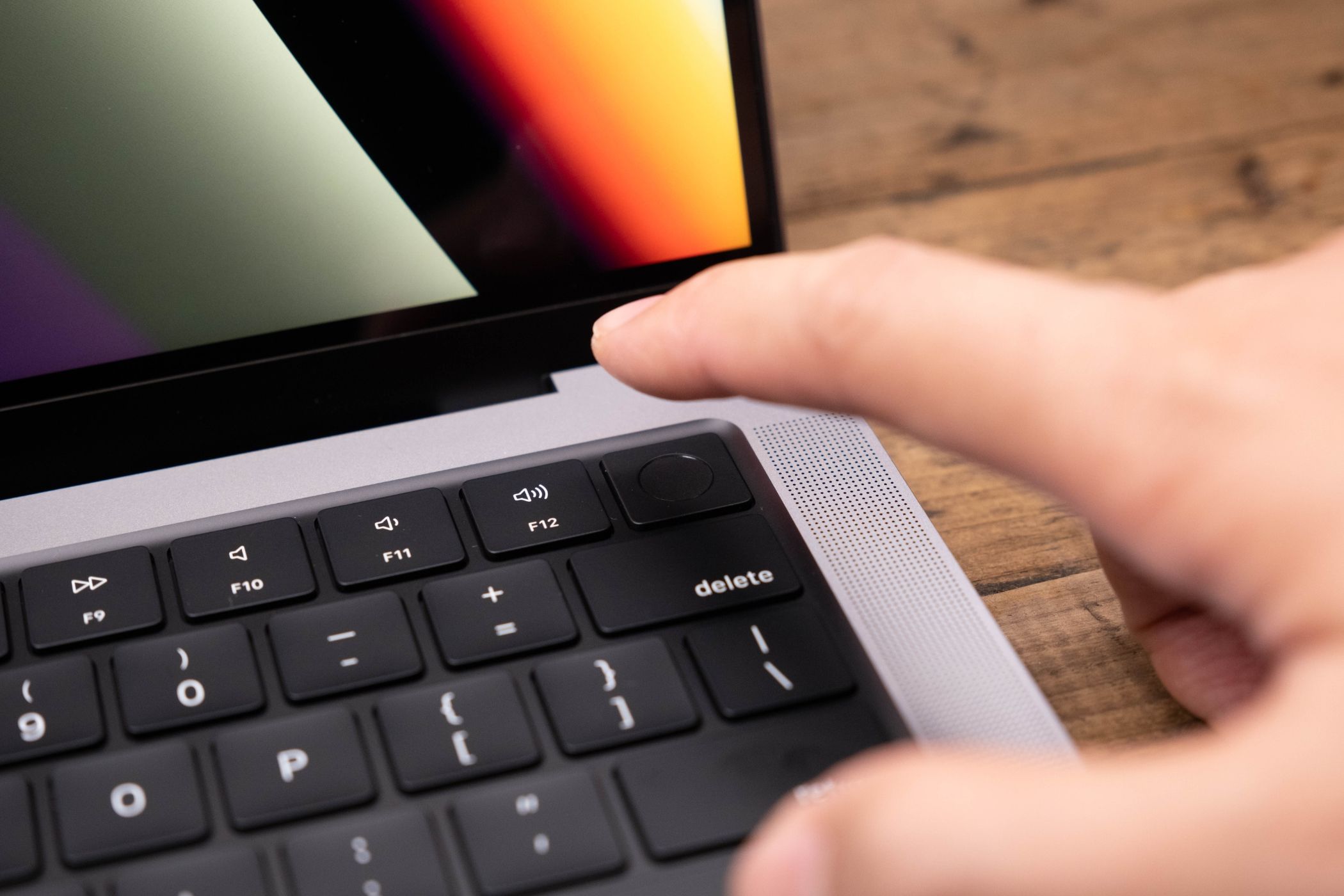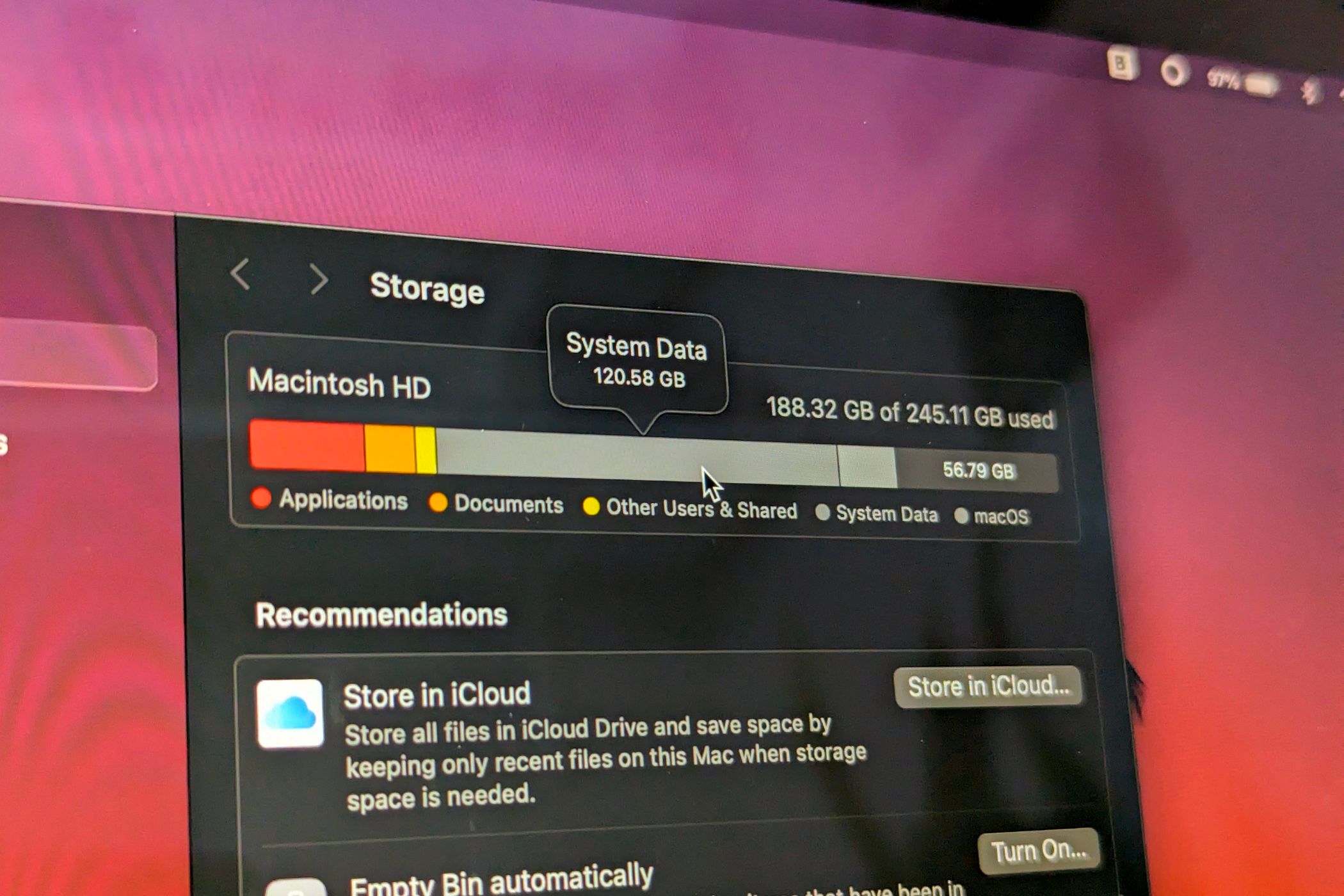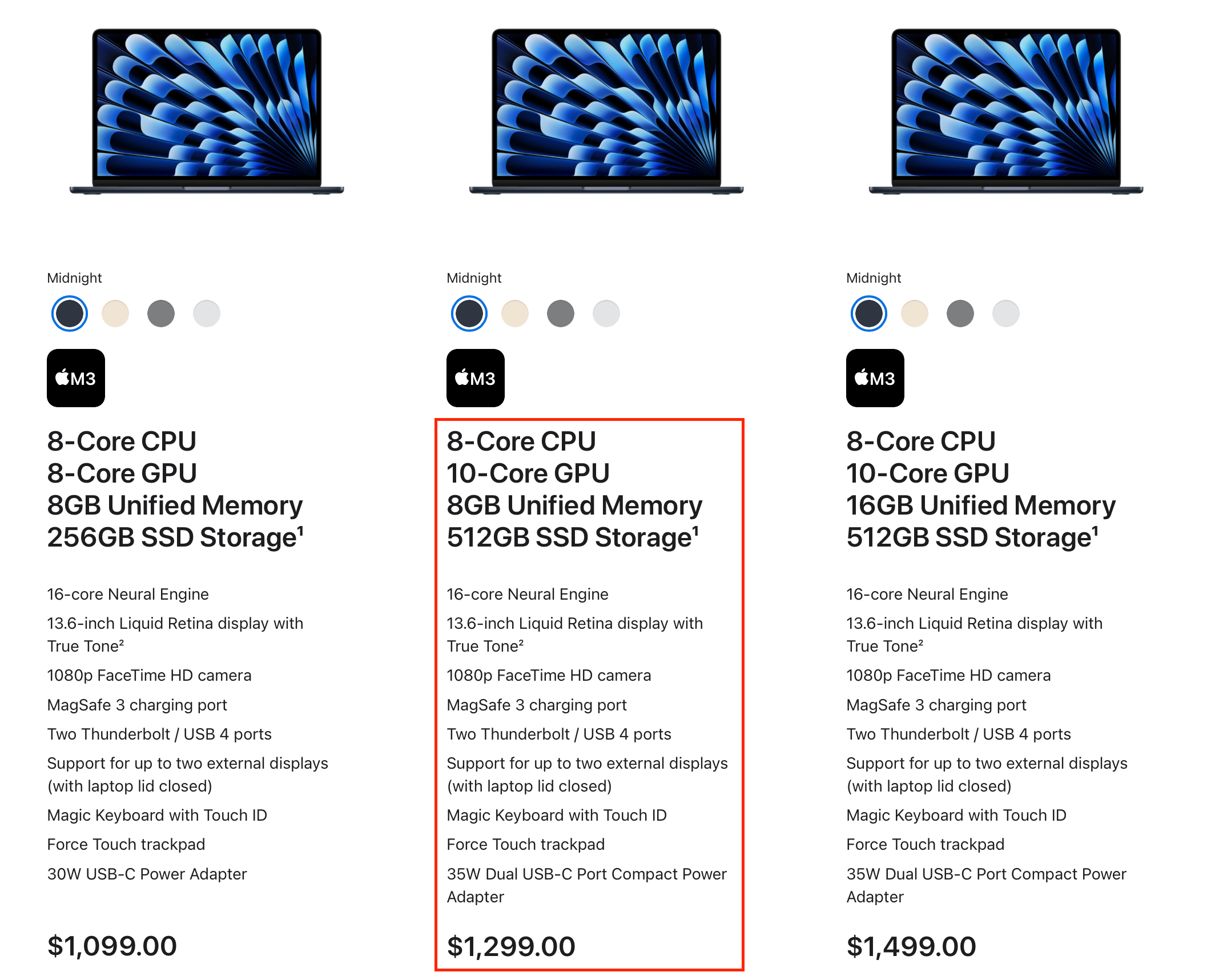Key Takeaways
- Lack of storage can limit your Mac’s lifespan by forcing you to upgrade sooner than you need to because you can no longer juggle storage.
- Modern Mac models score poorly when it comes to upgradeability, so choose enough storage to last until your intended upgrade date.
- External storage has its place, but it isn’t a complete replacement for a decent-sized internal drive (and micro-managing your internal drive is miserable).
So it’s time to buy a new Mac. You want a computer that feels fast, comes with the latest and greatest Apple features, and will last you for years to come. Before you hit checkout, make sure you think ahead.
The Importance of Buying Enough Storage
Not having enough storage can severely limit the lifespan of your Mac, forcing you to babysit your computer and make sure the main volume always has a buffer of free space. Everyone thinks they need more RAM, but 8GB of RAM is surprisingly adequate for the vast majority of users (and even Apple’s 16GB machines could use more storage).
There are a lot of upsides to buying a Mac. You get access to arguably the best operating system on the market, with free upgrades every year. Apple hardware is noteworthy for its build quality and premium feel. Your new Mac will also play nicely with existing Apple devices like the iPhone and iPad.
But there are a few downsides too, with the biggest being a lack of upgradeability. Upgrading the internal drive isn’t an option since the solid-state drive is soldered to the motherboard. While it’s technically possible, it’s an operation that is beyond the skill level of the average user.
This is in stark contrast to Windows laptops which feature replaceable drives that fit into slots on the motherboard. Even the PS5 uses user-upgradeable NVMe storage. Apple pulls a similar trick with its RAM, known as “Unified Memory” which ships on the same system-on-a-chip (SoC) as the CPU.
This means that the total amount of storage you opt for when you first buy your Mac will have to meet your needs for the foreseeable future. You’ll need to have enough storage for everything you want to do on day one, but also enough storage for five years down the line (or whenever you intend to upgrade).
This is a bigger conundrum for MacBook owners, since it’s not a huge hassle to connect desktop Mac models like the iMac and Mac mini to external storage. While you can do the same with a MacBook, if you’re constantly on the go and throwing your laptop in a bag (and you want access to all your files wherever you are), internal storage is worthy of some serious thought.
There’s also an argument to be made for the speed and convenience of internal storage. Your Mac’s internal drive is fast, which means it’s the best place to store applications and large files you want to access frequently.
Applications should be installed on your Mac’s hard drive. If you use virtual machines, you’ll want them installed on the internal drive to avoid performance penalties associated with slower external storage. Even having a space on which to temporarily copy files you’re working on (like large video files or RAW photos) can be massively helpful.
How Much Storage Do You Need?
It’s impossible to recommend a one-size-fits-all bit of advice for every Mac owner, since it really depends on what you’re using your machine for.
You might get away with a paltry 256GB of storage if you’re not planning on using your machine for much more than browsing the web, word processing, light study work, and staying in touch with friends or coworkers. You won’t be using much heavyweight software and you won’t have room for virtual machines.
You won’t be able to make complete local backups of an iPhone or iPad, so you’d better hope you’ve got enough iCloud storage to cover it. You might need to rely on Apple’s iCloud storage optimization to free up space by offloading files, which means an iCloud upgrade might be on the cards.
With such little storage, you could be close to capacity from day one. With iCloud Photo Library enabled, your Mac will keep a cache of local images which can shrink and grow. App caches in general could cause you a headache since they account for a lot of “missing” space on your Mac. Apps you use can swell in size, as can the operating system (which often shows up as “System Data” in System Settings).
If you’re using your MacBook for more than the bare minimum, you may find that you need to put in some work to avoid running out of storage. Filling up your drive can prevent your Mac from having enough “swap” room (used to temporarily offload items from RAM) and can even affect performance.
If you fill up your drive, you’re going to have to juggle apps and make use of software like GrandPerspective to hunt down large files. As someone who limped by with 256GB before upgrading in 2021, I can say that juggling space gets old fast. Delaying macOS updates because you lack free space to download even the installer is not fun. Killing apps because you’ve run out of swap space is no way to live.
One good test is to look at the machine you’re upgrading from and double the storage in your next machine. I quadrupled my 256GB MacBook Pro to a 1TB option and I’m at a comfortable 75% capacity. I still make liberal use of iCloud but I only need to keep a lazy eye on apps I don’t need and tidy up the Downloads folder occasionally.
A Storage Upgrade is Expensive But Worth It
The bad news is that Apple’s storage upgrades are notoriously expensive. Doubling the storage in an entry-level 256GB MacBook Air costs a whopping $200. Windows users can buy name-brand Crucial 1TB NVMe drives for a little over $50, and no-name drives for even less than that.
Unfortunately, you’re just going to have to bite the bullet (and Apple knows that). You’re buying a Mac, so upgrading the storage yourself isn’t feasible. Get as much storage as you think you’ll need, at a price you think you can stomach.
You should also consider upgrading to the next available model. For example, that base model M3 MacBook Air with its $200 512GB upgrade? Take your $200 and buy the more expensive model for the same price. Not only do you get 512GB of storage, but you also get two additional GPU cores and a USB-C power adapter with two ports instead of one.
This is true for base MacBook Pro models too. You might even find that your shipping time is reduced by going this route, since you’re opting for a more popular configuration.
Unfortunately, this isn’t necessarily true for the higher-end models, particularly the “Max” chips which start at 1TB.
External Storage Has Its Place
External storage can be slow and cumbersome. Cheap storage like external hard drives are perfect for Time Machine backups, but you probably don’t want one hanging off your MacBook all of the time.
Not all external disks are slow, particularly those that use solid storage and fast connections like USB 3.0 and Thunderbolt. It can be annoying to constantly rely on them though, since they must be connected and take up a precious USB-C slot.
If you need a lot of high-speed storage, then a Thunderbolt RAID array might be the way to go. This is something some people find they need anyway, even after purchasing a high-capacity MacBook. Those who regularly work with large files (like video and photo editors) will be locked to their desks while using them unless they copy files to the local disk first.
You can use the SD card slot in a MacBook Pro to increase your total pool of available storage, but it’s not a silver bullet. The SD card reader is slow (250MB/sec for UHS-II cards, 90MB/sec for UHS-I cards) compared to the alternatives. If you intend to regularly swap in an SD card, you’ll get bored with this dance quickly.
Network storage might be the most convenient option, but it’s best suited to media or files you don’t need to access frequently. Speed can vary dramatically over Wi-Fi depending on the age of your router, positioning, interference, and atmospheric conditions. Wired connections are great, as long as your network supports higher speeds (like 2.5Gbit, 5Gbit, or 10Gbit).
And then there’s cloud storage, including iCloud. You’ll be limited by internet speed and availability, and the more you use the more you’ll eventually need to pay out each month.
External storage has its place, and it’s a necessary part of any setup. Offload your media to your NAS drive to make it available all over the house. Use cloud storage to back up files and share remotely, while backing up your Mac to a cheap but slow Time Machine drive every few weeks. Invest in pricey yet fast solutions like Thunderbolt storage if you need to.
But don’t skimp on the internal drive and find that you need to upgrade your Mac long before it’s due. If you spend a little bit more on a higher capacity model, you might get many more years of use out of your machine and the upgrade will pay for itself.








